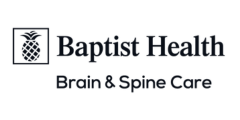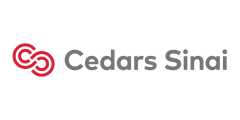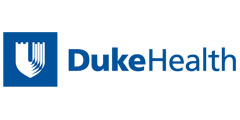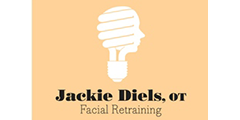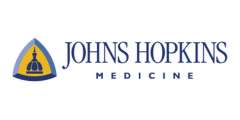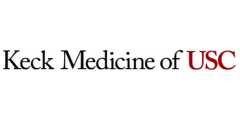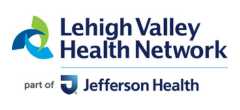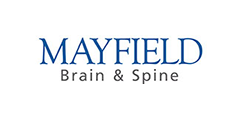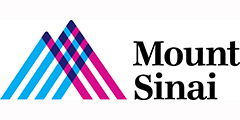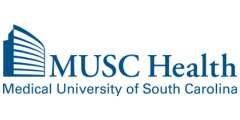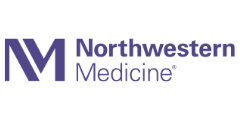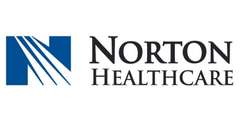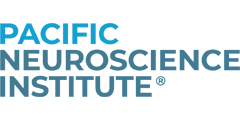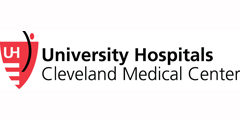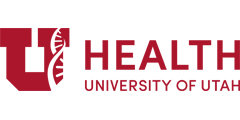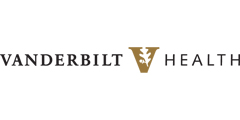- Details
Keywords
ACOUSTIC
pertaining to hearing
ACOUSTIC NEUROMA (AN)
benign tumor of the eighth cranial nerve
ACOUSTIC NEUROMA ASSOCIATION OF CANADA (ANAC)
a registered non-profit organization in Canada with similar purposes to ANA
AUDIOGRAM
a chart of hearing acuity recorded during hearing tests
AUDIOLOGIST
a medical professional who assesses and manages hearing and balance-related disorders
AUDIOVESTIBULAR SPECIALIST
a medical professional specializing in the diagnosis and treatment of hearing, balance, and communication problems, including tinnitus
AUDITORY BRAINSTEM IMPLANT (ABI)
a type of hearing device that bypasses the cochlea in the middle ear and the auditory nerve and is implanted in the brainstem
BENIGN
not malignant, non-cancerous: does not invade surrounding tissue or spread to other parts of the body
BILATERAL
pertaining to both sides of the body
BONE ANCHORED HEARING AID
a hearing device that works through bone conduction with a sound processor attached to a small titanium implant
The sound processor is placed on the deaf side, behind the ear and sound is transferred through the bone of the skull, stimulating the cochlea in the hearing ear. The brain is then able to distinguish between the sounds that it receives from the deaf side, via this system, from the sound that it receives directly from the hearing ear. This ultimately results in the sensation of hearing from the deaf side.
BRAINSTEM
connects the upper brain to the spinal cord; is less than three inches long
BRITISH ACOUSTIC NEUROMA ASSOCIATION (BANA)
a registered charity organization in the United Kingdom that is dedicated to promoting the exchange of mutual support and information among individuals affected by acoustic neuromas, with similiar purposes to ANA
CENTIMETER (cm)
.394 inch (2.54 cm equals one inch) - ten millimeters equal one centimeter
CEREBELLOPONTINE ANGLE
space bounded by the petrous bone, brainstem, and cerebellum, and through which cranial nerves 6-11 pass
CEREBELLUM
located behind the brainstem, extending from the brainstem out toward each mastoid bone; carries 11% of the brain's weight and controls muscular coordination
COCHLEAR IMPLANT (CI)
CI is a small, electronic device that is implanted within the inner ear to increase hearing capabilities. Cochlear implants may be helpful when the patient has significant hearing loss in both ears. The cochlear nerve and blood supply must be intact on the CI side - often not the case for post-treatment AN patients. CIs compensate for damaged or non-working parts of the inner ear, finds useful sounds and sends them to the brain.
CRANIAL NERVES
control the sensory and muscle functions around the eyes, face and throat- There are two sets each of twelve cranial nerves, one set for each side of the body.
CROS HEARING AID
Contralateral Routing of Sound - used with single-sided deafness. It receives sound on the deaf side, amplifies it, and carries it to the good ear.
CEREBROSPINAL FLUID (CSF)
a watery fluid, continuously being produced and absorbed, which flows in the ventricles (cavities) within the brain and around the surface of the brain and spinal cord
COMPUTERIZED TOMOGRAPHY (CT SCAN)
X-ray test which creates a cross-sectional picture of any part of the body - can distinguish among tissue, fluid, fat and bone
CYBERKNIFE (CK)
a robotic radiosurgery system that delivers multiple beams of radiation, used to treat benign tumors and cancers and other medical conditions located anywhere in the body in multiple sessions
EAR, NOSE AND THROAT (ENT) PHYSICIAN
also called an otolaryngologist, a physician specializing in the diagnosis and treatment of diseases of the head and neck, especially those involving the ears, nose, and throat
ELECTRONYSTAGMOGRAM (ENG)
a recording of the eye movements, usually done to confirm the presence of involuntary eye movements; can also be done in cases of vertigo to determine if there is damage to the vestibular portion of the acoustic nerve or in cases of possible acoustic neuroma
FACIAL PLASTIC SURGEON
a medical professional who specializes in the reconstruction, restoration, and enhancement of the face, head, and neck
FRACTIONATED STEREOTACTIC RADIATION (FSR)
any focused radiation treatment that requires more than one treatment delivery session
GADOLINIUM
a contrast material given at the time of MRI which concentrates in the tumor and makes it more visible
GAMMA KNIFE (GK)
a radiosurgical machine that contains 201 separate radioactive cobalt sources; gamma rays from each source are focused together at the tumor
INTENSITY MODULATED RADIATION THERAPY (IMRT)
an advanced mode of high-precision radiotherapy that utilizes computer-controlled linear accelerators to deliver precise radiation doses to a tumor or specific areas within the tumor
INTERNAL AUDITORY CANAL (IAC)
a short auditory canal in the petrous portion of the temporal bone, part of the base of the skull that extends from the ear towards the center of the head, through which pass the vestibulocochlear and facial neves
LINAC
a radiosurgical machine that produces x-rays electronically
MAGNETIC RESONANCE IMAGING (MRI)
a technique that uses a magnetic field and radio waves to create detailed images of the organs and tissues within the body
MIDDLE FOSSA
surgical approach to an acoustic neuroma primarily used for the purpose of hearing preservation
MILLIMETER (MM)
a metric unit of measure; 10mm=1cm
NEUROFIBROMATOSIS (NF)
a familial condition characterized by developmental changes in the nervous system, muscles, bones, and skin - the central form (Neurofibromatosis 2 - NF2) may produce bilateral acoustic neuromas
NEUROMA
benign growth originating on a nerve
NEURO-OPHTHALMOLOGIST
a medical professional who specializes in visual issues related to the nervous system
NEUROPSYCHOLOGIST
a psychologist who specializes in the relationship between the brain and behavior
NEUROTOLOGIST
a physician specializing in the neurological aspects of the auditory and vestibular apparatus
NEUROSURGEON
a physician with a surgical specialty concerned with the treatment of diseases and disorders of the brain, spinal cord and peripheral and sympathetic nervous system
OCCUPATIONAL THERAPY (OT)
a form of therapy for those recuperating from physical or mental illness that encourages rehabilitation through the performance of activities required in daily life
OPHTHALMOLOGIST
a medical doctor who specializes in diagnosing and treating eye conditions and injuries
OTOLARYNGOLOGIST (OTO)
a physician specializing in the diagnosis and treatment (including surgery) of head and neck disorders, especially those involving the ear, nose and throat (ENT)
OTOLOGIST
a physician specializing in the diagnosis and treatment of ear disorders only
PATIENT NAVIGATOR
a person who helps patients navigate the health care system by connecting them with the right services and providers
PHYSICAL THERAPY (PT)
treatment that helps you improve how your body performs physical movements
PONS
located at the base of the brain in front of the cerebellum, this section of the cranium is a mass of nerve tissue which coordinates the activities of the various lobes of the brain
POSTERIOR FOSSA
the cavity in the back part of the skull which contains the cerebellum, brainstem and cranial nerves 5-12
PROTON RADIATION
a therapy using protons, a positively charged particle, to treat AN
RADIOSURGERY (STEREOTACTIC RADIOSURGERY - SRS)
a treatment consisting of a single session of radiation treatment
RADIOTHERAPY (RT)
a treatment consisting of multiple sessions of radiation treatment
RETROSIGMOID/SUB-OCCIPITAL
a surgical approach for AN where an opening in the cranium behind the mastoid, close to the back of the head is used for access
SENSORINEURAL HEARING LOSS (SNHL)
deafness caused by failure of the acoustic nerve
SPEECH-LANGUAGE PATHOLOGIST (SLP)
a communication expert who assesses, diagnoses, treats, and prevents speech, language, voice, and swallowing disorders
SUDDEN SENSORINEURAL HEARING LOSS (SSHL)
a rapid loss of hearing that requires medical attention
SHUNT
a tube implanted in the cranium to balance the flow of cerebrospinal fluid and used in the treatment of hydrocephalus
TINNITUS
a common symptom of AN patients, a noise produced in the inner ear, such as ringing, buzzing, roaring, clicking, etc.
TRANSLABYRINTHINE
a surgical approach for AN where the mastoid bone and the bone in the inner ear (labyrinthine) are removed to access the tumor; this approach results in complete hearing loss on the tumor side
TRIGEMENAL NEURALGIA
a chronic pain disorder that causes episodes of severe facial pain
UNILATERAL
involving only one side
VERTIGO
a sensation of whirling or spinning, dizziness, and loss of balance, associated particularly with looking down from a great height, or caused by disease affecting the inner ear or the vestibular nerve
VESTIBULAR
associated with the balance system
VESTIBULAR THERAPY (VT)
type of physical therapy that uses exercise to help improve balance and reduce dizziness
- Details
Symptoms of Acoustic Neuroma (Vestibular Schwannoma)
Each heading slides to reveal more information.
- Details
Caregiver Resources
AARP
Caregiving Link
Online discussion group, videos, articles, free online tools including care cost calculator.
American Brain Tumor Association
Care and Support Link/Caregiver Resources
Living and Coping e-newsletter, online support, and links to additional resources including organizations that provide financial assistance and transportation assistance. Orientation to Caregiving, download the pdf handbook for family caregivers.
Caregiver Action Network
Provides education, peer support, and resources for family caregivers. Family caregiving toolbox provides a great selection of links and resources to helpful organizations. A peer network provides access to volunteers across the U.S. who are current and former caregivers and can help provide information and support.
CaringBridge
Provides free websites to connect people experiencing a significant health challenge to family and friends. Websites are easy to create and use. Authors add health updates and photos to share their stories while friends and visitors can leave messages in the guestbook.
Family Caregiver Alliance
Caregiver discussion group, tips, FAQs, fact sheets, resource listing by state, information available in other languages, and detailed listing of practical tools and resources for caregivers.
Lotsa Helping Hands
Provides free tools, resources, an online community, webinars, a monthly newsletter, and a resource directory.
National Alliance for Caregiving
NAC is dedicated to improving the quality of life for friend and family caregivers and those in their care, by advancing research, advocacy, and innovation.
National Brain Tumor Society
Resources and Support Link
Caregiver training, support groups, workshops, interactive online community, Link Library, tip sheets, how-to-guides.
Today´s Caregiver
Today´s Caregiver magazine, local resources, e-newsletter, discussion forum, Caretips, Fearless Caregiver conferences.
WellSpouse Association
Respite weekends, support groups, online forum, quarterly newsletter, e-newsletter, resource directory.
The Acoustic Neuroma Association® does not endorse any of the organizations listed above or any commercial product, physician, surgeon, medical procedure, medical institution or its staff.
- Details
Diagnosing
How are acoustic neuromas (vestibular schwannomas) diagnosed?
The diagnosis of an acoustic neuroma is often triggered by a patient’s symptoms. The most common presenting feature of acoustic neuromas, occurring in 90% of patients, is unilateral hearing loss. When "pure tone audiometry" is used, the most common finding is high frequency hearing loss. The hearing loss is progressive in most patients, but in approximately 12% of patients the hearing loss may occur suddenly. Other symptoms of the acoustic neuroma include asymmetric tinnitus (ringing in the ear, occurring in 80% of patients), dizziness, and disequilibrium (difficulty with balance). These symptoms will often prompt a doctor to order a hearing test, called an audiogram. If the hearing test confirms that one ear has more hearing loss than the other, then a magnetic resonance imaging (MRI) scan of the head is typically ordered. Early diagnosis offers the best opportunity for successful treatment.
Diagnosis involves:
- Hearing test (audiometry): A test of hearing function, which measures how well the patient hears sounds and speech, is usually the first test performed to diagnose acoustic neuroma. The patient listens to sounds and speech while wearing earphones attached to a machine that records responses and measures hearing function. The audiogram may show increased "pure tone average" (PTA), increased "speech reception threshold" (SRT) and decreased "speech discrimination" (SD).
- Brainstem auditory evoked response (BAER): Historically, this test was performed in some patients to provide information on brain wave activity as a response to clicks or tones. The patient listens to these sounds while wearing electrodes on the scalp and earlobes and earphones. The electrodes pick up and record the brain's response to these sounds, but these tests have been shown to be less accurate in diagnosing acoustic neuromas than MRI.
- Scans of the head: If other tests show that the patient may have acoustic neuroma, magnetic resonance imaging (MRI) is used to confirm the diagnosis. MRI uses magnetic fields and radio waves, rather than x-rays, and computers to create detailed pictures of the brain. It shows visual “slices” of the brain that can be combined to create a three-dimensional picture of the tumor. A contrast dye is injected into the patient. If an acoustic neuroma is present, the tumor will soak up more dye than normal brain tissue and appear clearly on the scan. The MRI commonly shows a densely "enhancing" (bright) tumor in the internal auditory canal. If the patient is unable to get an MRI, a computed tomography (CT) scan may be ordered instead.
- Because MRI and CT scans of the head are often ordered for many different conditions, in some cases, acoustic neuromas are discovered incidentally.
- Details
Caregiver Overview
As a caregiver of an individual with acoustic neuroma, we want you to be informed, educated, and supported. Being a caregiver can be a challenging role. A person diagnosed with acoustic neuroma may experience side effects that may impact their quality of life. While side effects may or may not improve with treatment, caregivers are essential to help patients navigate the many steps of the AN journey. You are not alone, and we encourage you to take advantage of our caregiver resources.
Caregiver Virtual Support Group
Meets several times a year. Moderated by ANA Peer Mentors.
Peer Mentor Program
The ANA provides access to quality Peer Mentors, several are acoustic neuroma caregivers. Connect with a mentor for one-on-one support.
Dealing with the New Normal Tips and Suggestions for Coping
Caregiver Tips:
- Take care of your own physical and mental health needs. You've probably heard this before, ”You can't take care of someone else if you don't take care of yourself.” Be aware of your stress levels, take breaks, exercise, and talk to a friend. Only you know what works best for you.
- Ask for help! We all have our limitations, be aware of your strengths and abilities. When people offer to help, accept the offer – caregiving is definitely more than a one person job.
- Be flexible. You will encounter situations where you may have to re-evaluate your needs and priorities. Things you did in the past may have to be looked at in new ways and new strategies developed to help you accomplish your tasks and manage your new responsibilities.
- Educate yourself about your loved one's condition. This will help you better communicate with medical health professionals and other health care providers about treatment and care.
- Seek resources. Ask yourself, ”What people/organizations/information will make my caregiving easier/better?” Be specific and selective about the resources you need. See Caregivers Resources for useful tools for caregivers to utilize in finding additional information and support.
Connect with us:
Manager, Volunteer Programs
678-968-4705




